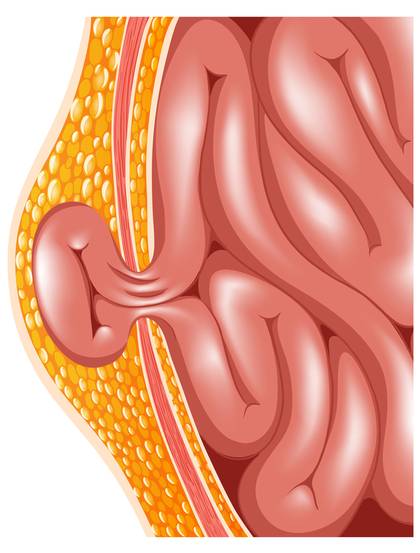Disembowelment - abdominal hernia
Definition of Abdominal Hernia
 the abdominal hernia can be responsible for intense pain of the abdominal strap. It is due to a localized weakness of the wall. Interventions by conventional surgery favor the occurrence of these problems. The repair will concern all the layers of the abdominal wall from the deep plane (peritoneum) to the skin.
the abdominal hernia can be responsible for intense pain of the abdominal strap. It is due to a localized weakness of the wall. Interventions by conventional surgery favor the occurrence of these problems. The repair will concern all the layers of the abdominal wall from the deep plane (peritoneum) to the skin.
Principle
A laparoscopic repair is indicated when the disembowelment does not is not too large (collar less than 5 cm). A mixed approach combining a classic approach and stapling by laparoscopy can be used for larger disembowelments (between 5 and 10 or 12 cm). Wearing a compression belt is recommended postoperatively for 2 to 3 months depending on the severity of the disembowelment.
Operative follow-up
The patient comes in the day before the operation. The gastric tube like the bladder tube are not necessary on the other hand from the postoperative period, the wearing of the belt will be useful for analgesic purposes.
Drinks are allowed on the evening of the operation unless difficult adhesiolysis has been performed. The day after the operation, getting up is authorized and solid food is resumed. The infusion is quickly withdrawn if there is no pain and food is well tolerated. The analgesic treatment is then taken by mouth.
Discharge of the patient after surgery
Discharge is possible on the fifth postoperative day with a 15-day work stoppage in the event of sedentary work or 1 month in case of physical work. The personal restraint belt is reused upon exit. Its port is advised night and day the first month, the day the following month then only during the efforts the following month. The consultation with the Surgeon is scheduled one month after the operation and a
Complications
They are infrequent. These are essentially localized pains which are favored by the technique of fixation of the prosthesis. Collections can also occur postoperatively. It may be collection of blood (hematoma) or collection of serum (seroma). These collections if they are not responsible for pain do not require puncture. They usually regress spontaneously. Recurrences, although rare with this technique, do exist. Flange occlusions are more troublesome because they require surgical revision. Finally, as with any use of a prosthesis, an infection is possible. The treatment is then often the removal of the foreign material which makes it difficult for the wound to heal.